Understanding your dog’s feelings can offer helpful information, such as fear or disinterest, for example, when it comes to anxiety or indifference. Look at your surroundings and your dog to get the complete picture!
Dogs have a distinguished way of communicating with humans and other dogs through dog body language. The most important thing to understand is that dogs are excellent at expressing their emotions and states through facial expressions, postures, and sounds – depending on their breed.
Dog’s body language can be classified by signs of play or discomfort, which can be broken down even further into adjusting, calming, stress, and warning signs. Here’s a little insight on dog expressions from head to paws :
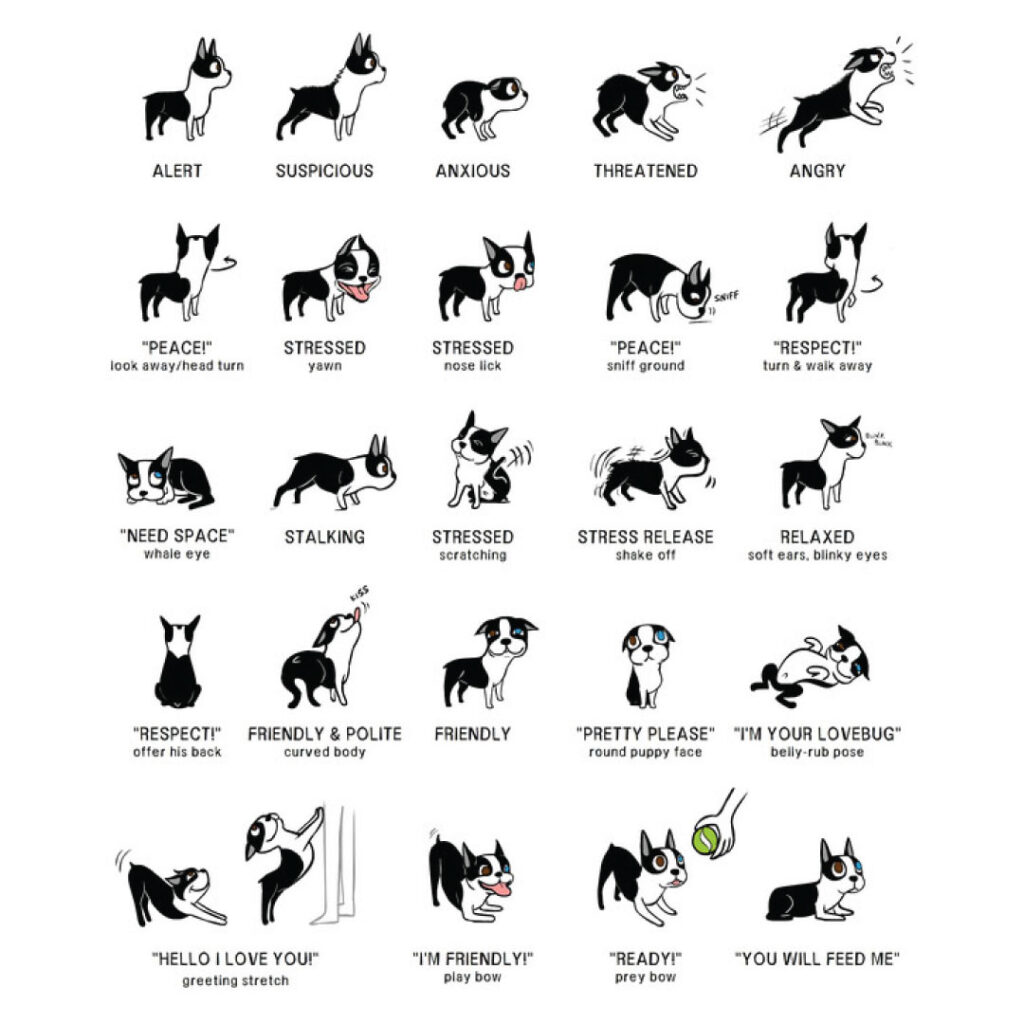
Dog’s Body Language Chart
We have categorized the chart below according to their type, whether physical, vocal, or based on expressions so that interpreting dog body language becomes more effortless for you.
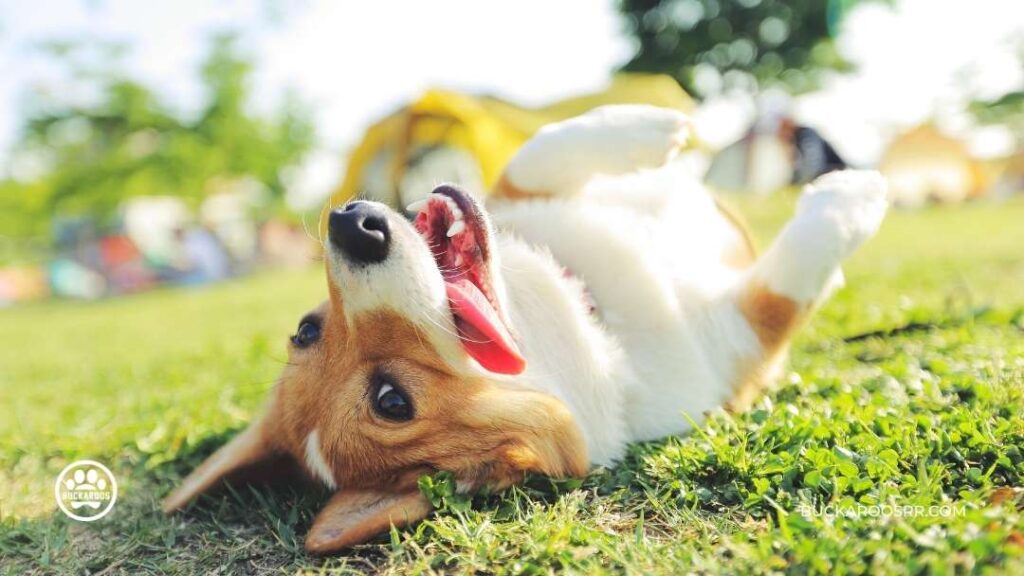
Dog’s Body Language
- Downward – Get! Set! & Play! Your dogs are ready for playtime when you see them in the downward position. This is when they have their chest, and front legs stretched out with their butts in the air.
- Lowered – If your pet dog is curling up and trying to remain as low as possible, look for what may scare them. For example, they might be afraid of something, someone, or loud noises. Or they might be stressed out and tired due to exhaustion.
- Shaking: Drying or de-stressing, both actions can make your dog shake. But in some cases, it may be a medical issue such as an ear infection. So keep an eye on these body languages and respond if the action persists.
- Shivering – This occurs when your dog is trembling with fear or shivering with cold. Assure that you are there for them if they fear, and keep your dog warm if they feel cold.
- Exposed Belly – If they are rolling over and putting their belly before you, it’s time for some tummy rubs. Dogs love to get their bellies rubbed as a means of getting pampered and cared for. They love and want to be loved back. It’s their adorable gesture.
- Standing Tall and Stiff– A dog who stands this way with a good, packed body and clenched jaw is often getting ready to defend itself. Look around for potential dangers if any.
Standing Tall and Relaxed – If they stand this way before you, it just means they are greeting and happy to see you. Some tail wagging may even accompany this gesture.

Dog’s Body Language- Mouth
- Licking – They may perform this body language in multiple ways, like licking their paws, nose, or lips. Every action represents a different issue. If the licking is done during mealtimes, it may be casual, but apart from that, it is a sign of fear, caution, and anxiety.
Similarly, if they are constantly licking their paws or paw pads only. If so, you might want to check them for any skin irritation. If you cannot sort it out, this might be a sign to visit the vet.
Dogs are complex yet sweet too. They may even start licking you to grab your attention. So if they start licking you out of the ordinary, you need to take some interest.
- Tightly Closed or Dropped & Open – While an open mouth is a confirmation of a happy dog, a clenched or closed mouth is a red flag. It shows that your pet is feeling distrustful towards someone or something around. If this expression is ignored, it can soon progress to something rational.
- Wrinkled or Curled Lips: Your pet is ready to fight or is feeling grumpy. Usually, this may result from another dog irritating or intimidating your pooch. This is generally followed by teeth-baring if the behavior escalates and gets aggressive.
- Yawning: No, your pet is not bored but wants something to go away. Yawning should not be instantly associated with tiredness or boredom. It may be that a surrounding situation or element is making your dog uncomfortable, and they want to get rid of it.
- Panting: It is the dog’s way of cooling off but is also a stress reliever. In other words, too much panting without any exercise indicates a worrying dog.
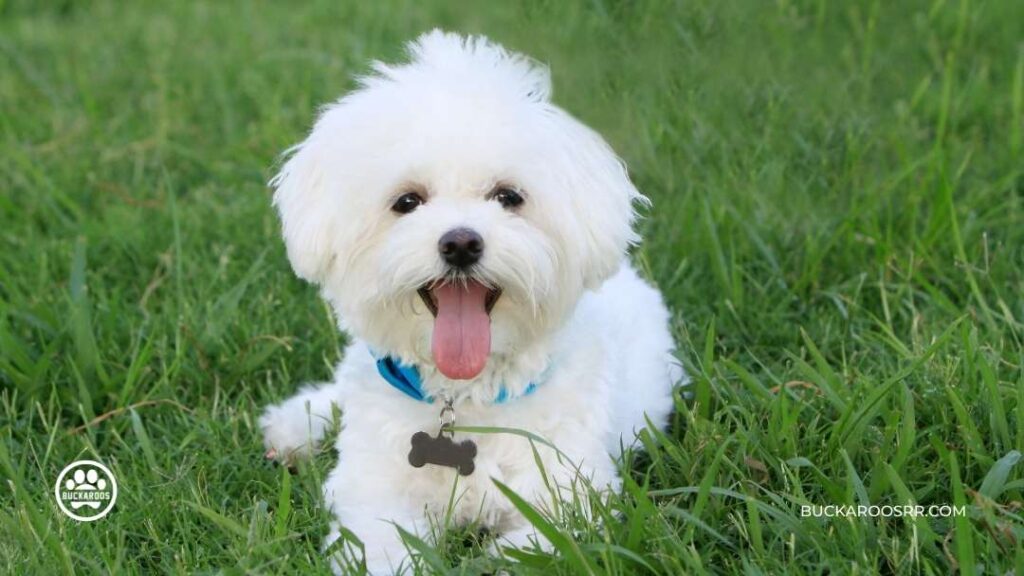
Dog’s Body Language- Eyes
- Looking away or avoiding eye contact: This may be a very adorable situation in some cases, knowing that they have been caught in the act. Confronting your dog after making a mess or something equivalent will tempt them to look away as a sign of guilt and regret. But sometimes, they may feel cautious if they avoid eye contact with someone new at your place or a fellow dog.
- Staring – When dogs decide to stare at each other, it’s never a good thing, and we can tell whether or not the situation is going to escalate into a heated argument. The best way to deal with this situation is to step in between the two dogs immediately. If left alone for too long, it can lead to bigger fights that might jeopardize your pet’s safety.

Dog’s Body Language – Tail
- Hidden or Tucked tail – This tail gesture usually indicates tired, given up, or not in the mood. A tucked tail implies that your dog is not in the mood to respond and is fearful of its surroundings.
- Wagging Tail: We all know what a wagging tail means! A happy dog will wag its tail just as kids like to clap or laugh—a very typical and natural process of dogs and it’s quite easy to interpret.
Tall or Curved Tail: This tail gesture is screaming danger, loud and clear. Your dog is feeling excessively threatened and is ready to pounce or bite. Beware!
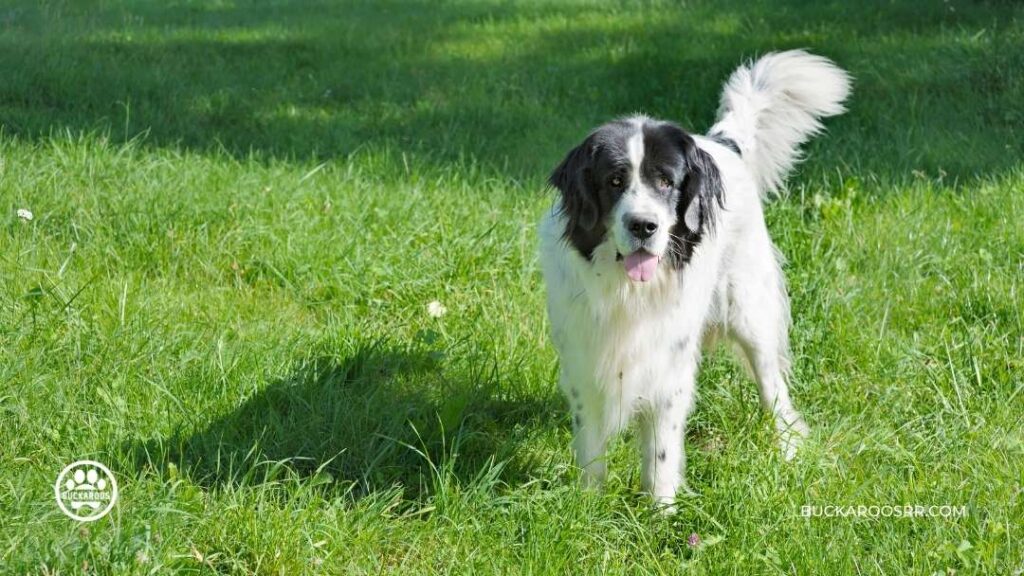
Dog’s Body Language – Ears
- Perked Up Ears – A sign to tell that the dog is on its feet or paws. They are ready, jumpy, excited, and prepared to take action. Try to use the energy positively before they get destructive.
- Low ears: This may be associated with tail wagging and is a sign of a relaxed and happy dog.

Dog’s Body Language – Sounds
- Low Growl – Usually made to fend off a threat or show aggression. This can be seen when your dog gives out low-pitched growls.
- High Growls- They are just the opposite of what they seem. They are practiced while playing.
- Short Growls – They usually indicate insecurity and low confidence. When your dogs are checking things out they tend to put out harsh growls. Let them take their time to explore and adjust.
- Long Growls – Long and low growls mean you need to step in. There is a threat, or your dog doesn’t like something, so step up and take the desired action.
- High-pitched barks- This signifies pure excitement and an urgency to leave the house. They may even be trying to tell you that they need to do their business, so you have to take them out right now!
- Low-pitched barks- They are a warning for the opponent. They don’t like you, and if need be, they will fight back for whatever reason they dislike you.
- Whining – This is another way of indicating a need. Look for signs such as where and what they are whining around. For example, they may be hungry and so would start whining around their food bowl.
Whining with odd behavior is when they try to tell you something more. Assess the situation or the time they whine at. They may be trying to say something that disturbs them physically or they might need medical aid.
- Howling- It is usually a mode of communicating with other dogs or grabbing your attention. It differs from breed to breed.
It is impossible to learn how to speak dog language, but eventually, you will get to know more about them as you grow your bond with time.
Besides sounds and postures, various dogs showcase certain emotional signs that need to be managed and handled carefully.
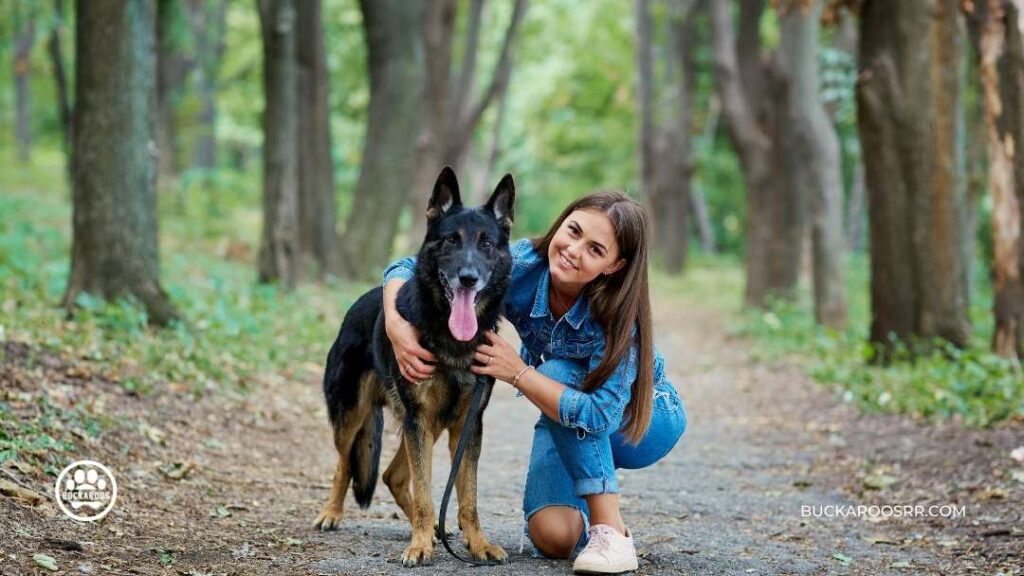
Dog’s Emotional Body Language
- Pacing- A pacing dog is trying to tell you that they are worried and moving towards anxiety. It may be related to something that they are going through that gives them stress.
For example- You leave for work and your buddy has to stay back alone. Or meeting another dog owner whose dog is intimidating or a threat.
- Raised Hair- This mostly indicates that they are in an alert position and can sense some awkward danger. It may be their sixth sense or the smell of actual crises.
- Lethargic, or shutting down– A disturbed appetite, avoiding close contact with you, and becoming lethargic are all signs your dog is anxious, fearful, or ill. Access and think about what could be causing this behavior, using careful observation of the dog’s body language and vocal tone to try and identify the cause.
In Conclusion
Other stressed dog body language signs may vary amongst dog breeds. For example, you can note specific behavioral outcomes or triggers for your dog. Similarly, you can even make a dog body language chart with pictures of your dog’s breed to understand them better.
Our training experts at Buckaroos 360 are happy to help you with developmental or dog psychological issues. And overall, it is a given that once you start spending more time with your mate, you understand them better.
Our experts at Buckaroos 360 make sure they can connect and communicate with the dogs for you to understand. They can help you be a good pet parent and caretaker. After all, your love and care are the two most needed things to understand your dog’s body language.





